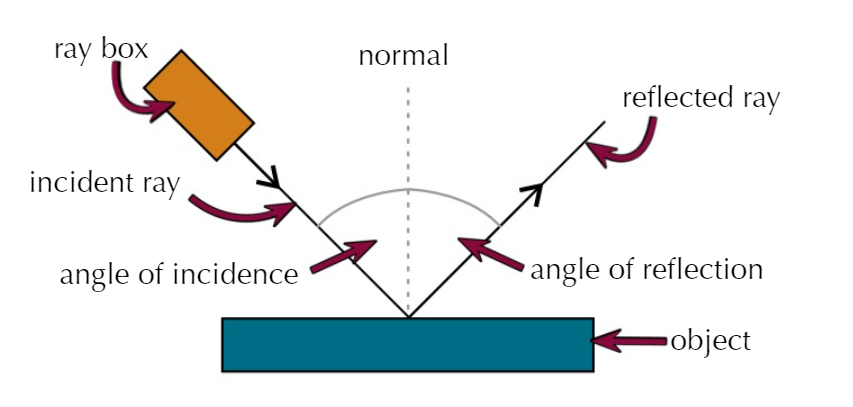Investigating Light
1/5
There's no tags or description
Looks like no tags are added yet.
Name | Mastery | Learn | Test | Matching | Spaced |
|---|
No study sessions yet.
6 Terms
How to investigate refraction of light through a solid block?
Place the block on a piece of paper and draw around it using a pencil
Draw the normal 90 to the block two opposite sides of the block
Place the block on the paper and use a ray box to shine light through the block from one side of the normal
Use a pencil to place crosses on the incident ray and the emerging ray
Remove block and turn off ray box
Draw a line using a ruler and a pencil through the crosses
Connect lines by drawing a straight line in the block shape
Measure the angle of incidence and refraction to the normal
Repeat for different materials and compare

How will the angle of refraction differ?
more optically dense material will cause the angle to be smaller
How to investigate reflection of light on a solid object?
Draw a straight line on a piece of paper using a pencil and a ruler
Place the object so the side lines on to this line
Use a ray box to shine light on the side of the object
Draw the normal on the point where the ray hits the object
Place several crosses on the incident and reflected ray
Turn off ray box and draw straight lines through the crosses using a ruler
Measure the angle of incidence and reflection to the normal and he width and brightness of reflected ray
Repeat for a range of objects and compare

How will the angle of reflection differ?
It will be equal to the angle of incidence
How will the reflected ray differ?
For rough surfaces, the ray will be dimmer and wider
Conclusion
the angle of reflection and refraction changes for each material